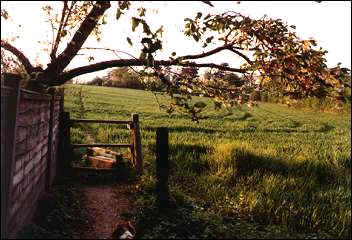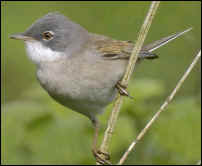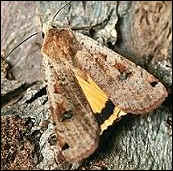|
THE COOKHAM DOSSIER |
|
LATE
SUMMER UPDATE
What
on earth happened to summer 2008? Did I miss it? Meteorologically,
September 1st is the commencement of autumn, and it
certainly felt like it! And so we have already seen the quick
departures of many of our summer visiting birds, with Reed
Warblers the first to abandon there reed beds. A few could
still be found buzzing plaintively in the last week of August
along Strand Water and several of their relatives, the Whitethroat
and the Lesser Whitethroat were feeding up in bushes around
Widbrook common in readiness for their long migration ahead. I
have always felt it a pity that the latter species was awarded the
name ‘Lesser’ Whitethroat, For it is most The Swifts however are usually the first summer visitors to depart and most had gone by end of July. House Martins, for which I still only heard of 2 nests in all the Cookhams this year, may well still be feeding second broods, even with the help if first brood youngsters, as it is often the case that the fledglings have to commence on their migration within a couple of days of emergence from the nest at the end of September, so anything that speeds up their development is helpful. Of course, some of our resident birds are still completing their breeding season, and dare I say it, but it seems our local House Sparrows have had better luck with their 2nd (or even 3rd) broods than their first. With only 1 or 2 young successfully raised in some first attempts, there appears to be 5 or so in each of the current broods visiting feeding tables. I
mentioned the Hobby in the last Update, as being in short
supply locally, and I have had very few sightings over the
village. However, it seems they bred nearby (1 pair certainly at
Cliveden and possibly another on White Place Farm) as 2 family
groups were feeding over Many
will have noticed the dearth of insects this year, especially
butterflies. Following a couple of poor years for these delightful
creatures, emergence was much later this year for most species and
numbers of them all way down. Moth numbers have picked up slightly
in the last couple of Of
the other insects, Roesel’s Bush-cricket was seen on
Marsh Meadow. Just a few year’s back, this would have been a
notable sighting, as the species was rarely seen west of Bees
have been busy in recent weeks, perhaps making up for lost time in
the damper parts of the summer. Such weather, combine with the varroa
mite, has been blamed for the huge losses of honey bee
colonies in But at least Cookham has not been affected by a mass of biting insects in the way Blandford Forum has in recent years, with the so-called Blandford Fly having been attacked by a succession of ‘control’ techniques for decades, with only limited success. Nonetheless, I have had 2 particular pests to deal with for the last few weeks – but school starts again this week, so phew! Many thanks again for those who took the trouble to send in reports. Please do continue to keep the information flowing in. We would still be grateful for late House Martin nest information, counts of House Sparrows, and any hooting Tawny Owls. BRIAN CLEWS
Do please get involved and help us find out more of our local wildlife. email wildlife@cookham.com
|
|

 certainly
a more distinctive bird than the Common Whitethroat in my
opinion. True it is more skulking, but its darker cap, gray mantle
and dramatic white underparts make for an altogether more notable
plumage than the duller-shaded Common. And the Lesser’s call is
far more noticeable, particularly at any distance, with its shrill
‘clucking’ sounds.
certainly
a more distinctive bird than the Common Whitethroat in my
opinion. True it is more skulking, but its darker cap, gray mantle
and dramatic white underparts make for an altogether more notable
plumage than the duller-shaded Common. And the Lesser’s call is
far more noticeable, particularly at any distance, with its shrill
‘clucking’ sounds. weeks,
Large Yellow Underwings particularly prominent in the
village. These are the very large moths that bash around the
lounge or bedroom having slipped in through an open window on hot
sticky nights (not that we’ve had too many of them!) As large as
they are, they are still dwarfed by the huge Old Lady moth,
which is often abroad at the end of August, with a gentle flapping
flight style, reminiscent of small bats. The brilliant yellow Brimstone
Moth has also been fairly well spread around the villages and
the striking Vapourer Moth has also recently emerged,
pretty much on schedule. It seems the emergence dates for most
species had returned to more normal dates towards the end of the
season compared with the beginning of it. The seasonal migrants
from across the continent however, such as Silver Y, often
widespread in late summer meadows, have been almost absent,
reflecting a similar pattern with our migrant butterflies such as Red
Admiral and Painted Lady, the latter of which I have
seen none this year at all!
weeks,
Large Yellow Underwings particularly prominent in the
village. These are the very large moths that bash around the
lounge or bedroom having slipped in through an open window on hot
sticky nights (not that we’ve had too many of them!) As large as
they are, they are still dwarfed by the huge Old Lady moth,
which is often abroad at the end of August, with a gentle flapping
flight style, reminiscent of small bats. The brilliant yellow Brimstone
Moth has also been fairly well spread around the villages and
the striking Vapourer Moth has also recently emerged,
pretty much on schedule. It seems the emergence dates for most
species had returned to more normal dates towards the end of the
season compared with the beginning of it. The seasonal migrants
from across the continent however, such as Silver Y, often
widespread in late summer meadows, have been almost absent,
reflecting a similar pattern with our migrant butterflies such as Red
Admiral and Painted Lady, the latter of which I have
seen none this year at all!